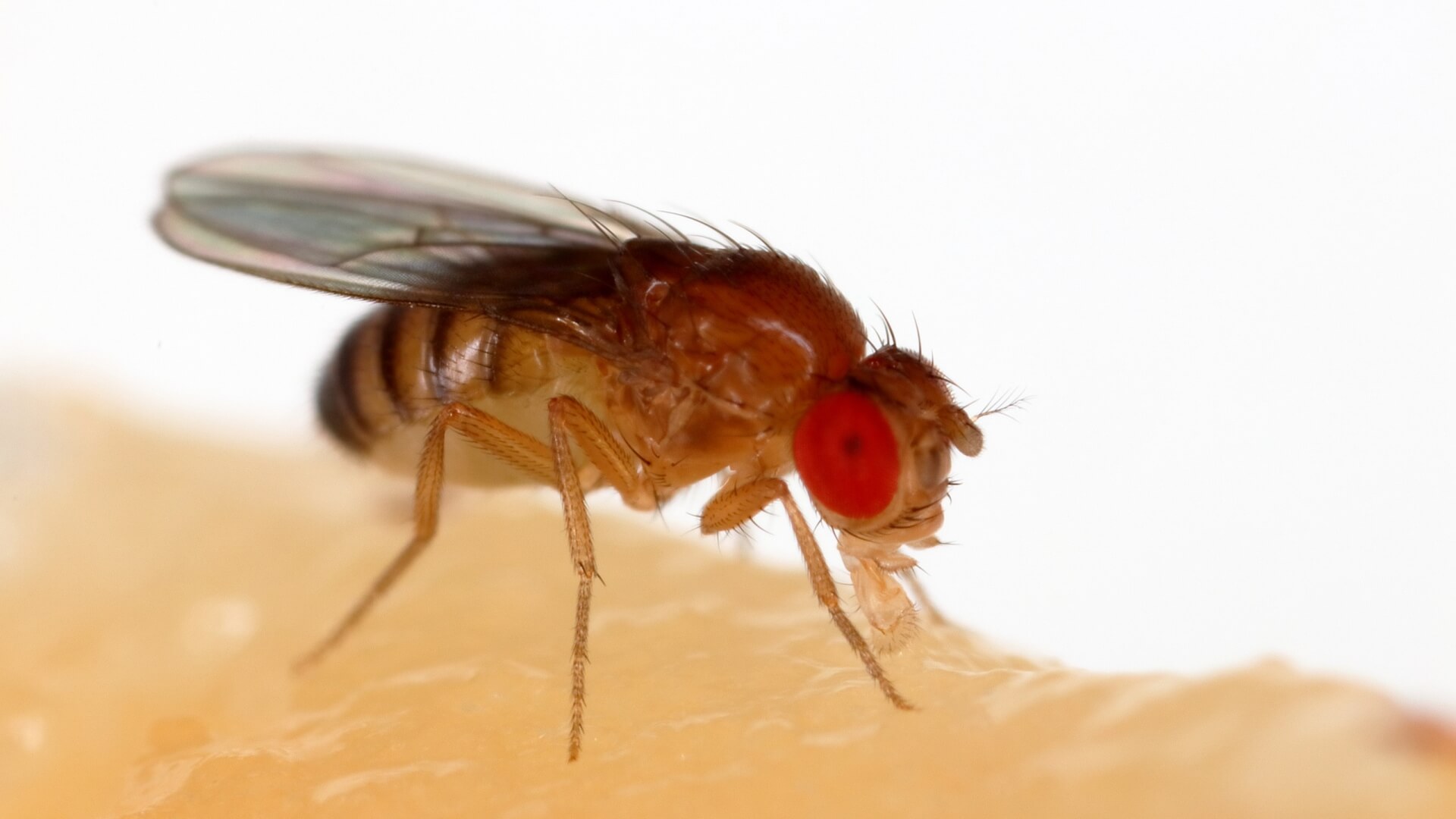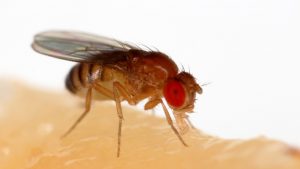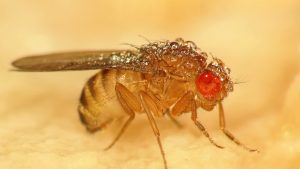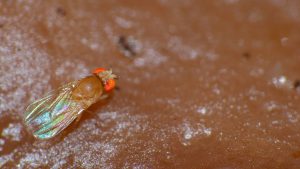Getting to know the distinct life stages of the fruit fly can aid you in controlling and preventing these pests and the damage they can cause. You’d know when and where the pest is likely to be present, how a particular life stage would affect your produce and you’d be able to create unfavorable conditions accordingly. The entire life cycle of the fruit fly is quite rapid, and development is divided into four stages: egg, larva, pupa and adult. In the article, we will explore all 4 of these stages in depth.
How long does a fruit fly live?
In ideal to optimal conditions, the average life span of a wild fruit fly is 40 to 50 days. As temperature affects all aspects of insect physiology, the life span of the fruit fly is heavily influenced by temperature, with both overly cold and overly hot temperatures stunting their development.

Fruit Fly Eggs
The fruit fly is attracted to areas where moisture has accumulated, as well as fermenting juices from ripe fruits and vegetables. Here, the adult female fruit fly will lay her eggs, up to 500 plus eggs at a time, with embryogenesis taking place within the egg. Fruit fly eggs are not visible to the naked eye, measuring only less than a tenth of an inch (half a millimeter) in length, of ovoid shape and covered outside with a thin but strong envelope. With the aid of a microscope, one can observe that they look like tiny grains of rice and are yellowish in color. In ideal conditions, the eggs will hatch in less than 24 h, and the first instar larva will begin feeding.
Fruit Fly Larvae
After the eggs hatch, the resulting larvae, small wormlike maggots, begin to feast on the decaying flesh of the fruit within which they were laid, consuming as much as possible. In order to store nutrients and energy for the forthcoming pupal stage, the larvae will feed on the microorganisms decomposing the fruit as well as the sugars of the fruit itself. This feeding and growth phase will last for around four days. The larvae are typically expected to increase in weight 200-fold during this growth phase. The larvae will grow for a few days while molting twice, at optimal temperatures.
Fruit Fly Pupae
After spending around a week between the egg and larval stages, as well as consuming enough nutrients and energy, the larvae will seek a less moist location within which to pupate, in order to emerge as sexually mature adults. The flies will use the last-stage larval skin to form a hardened exoskeleton called the puparium. Typically, fruit flies will spend around another week encapsulated in the puparium, where they will undergo a short metamorphosis, around 4-5 days long in optimal conditions.
A day before the adult fly emerges from the puparium, one can notice folded wings and brick-red eyes through the surface of the almost transparent puparia, which turn black when the flies are ready to burst out. After having forced their way through the puparia, adult flies emerge, the last stage in their life cycle. The young adults have elongated wings and abdomens, and are lighter in color, but within a few hours, they will become darker and slightly larger, exhibiting typical insect anatomy. After another 48 hours, the fruit fly will be sexually mature and ready to mate, with only around 10-20 days left in its lifespan. The cycle will continue.
Fruit Fly Metamorphosis and reproduction rate
Similar to most insects, there are four stages to the life cycle of fruit flies. Three are underwent before the flies emerge as adults: eggs, larvae (maggots), pupae. The egg and larval stages last approximately eight days, while the pupal stage lasts around six days, depending on temperature. In optimal conditions, fruit flies can develop into adults within one to two weeks where they will live for short weeks, but not before repeating the quick cycle. A brief summary of each of the stages of the life cycle of fruit fly is provided below:
The female adult fly lays hundreds of eggs into the decaying or ripening fruit of a host plant, where moisture and nutrients are abundant.
12-24 hours after the female lays her eggs, larvae hatch. These larvae will then undergo molting stages before seeking drier area to pupate. The puparium is formed from the larval skin as it darkens and becomes a hard exoskeleton.
Fruit flies morph into adults in this pupal stage. A day before the fly emerges from the puparium, certain features are already visible through the pupal case, which darkens right before the fly bursts out, pushing its way through the operculum, which is the bottom end of the pupal case.
Only 2 short days after emerging from the puparium, female fruit flies are sexually mature and can begin the reproduction cycle, with adult fruit flies being fertile for the entirety of their short lives, and females capable of storing sperm from multiple inseminations for future use.
The astonishingly rapid reproduction rate of fruit flies would be impressive if they weren’t such harmful pests. But their swift reproduction cycles make them crucial in the laboratory, as they are valuable to all kinds of scientists.
Female fruit flies proliferate with great rapidity, laying multiple batches containing hundreds of eggs within their short life spans. These eggs will go onto to hatch a very short while after, quickly pass through the other developmental stages, before morphing into adults and repeating the never-ending cycle.
Frequently Asked Questions
Fruit fly eggs aren’t visible to the naked eye. The shape of a grain of rice, they reach about ½ mm in length and are yellowish in color.
The maggot is an early stage of the fruit fly’s life cycle. Maggots will turn into adult fruit flies.
Fruit flies typically pupate for around 5 days.
Fruit flies reproduce quickly, with the female laying hundreds of eggs during her short lifespan.
Click here to buy the Green Gobbler Fruit Fly Killer on Amazon, only for $29.99!





Apple cider vinegar or wine works fine. Put an inch or so in a tall glass, cover with clear plastic wrap and poke 4 or 5 holes around the edge, large enough for them to get in but difficult to find their way out. Put in more than just the kitchen, they migrate. Cheap and works just fine. Hopefully they die happy, at least in the wine.